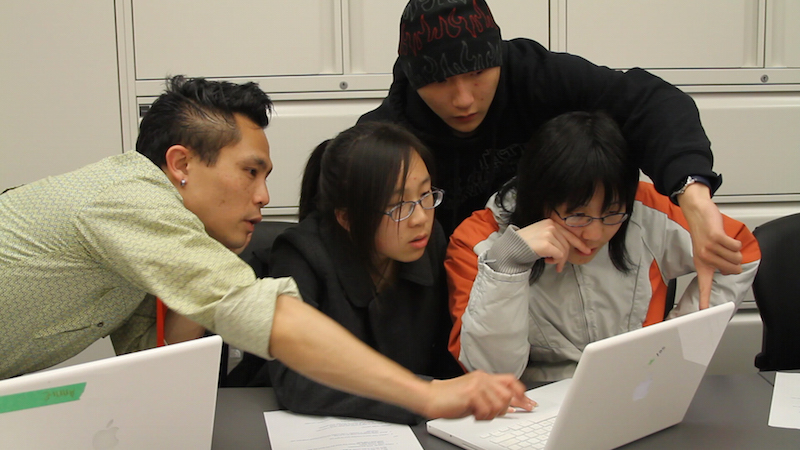The New Learning Times, a publication of the Teachers College at Columbia University, did a nice profile about me recently. I’ve reprinted some it below. See the complete piece by George Nantwi at their site.
How did your educational trajectory and past professional experience shape your current work?
I have a wide-ranging and circuitous educational and professional path that has led me to the work I do today. My undergraduate work was in the social sciences, double-majoring in Sociology and Communications Studies at the University of California Los Angeles. I also have a master’s degree in Political Science from New York University. As I like to tell my students, I have basically no formal qualifications to do what I do! What I do have is a string of formative and powerful life experiences that have prepared me for the work that I do now.
After college, I managed and directed a number of international non-profits that gave me a strong appreciation for the role of state and non-state actors in responding to global crises, from natural disasters to humanitarian emergencies to terrorism and genocide. Through participating in several international conferences and treaty negotiations, I got an up-close understanding of the complex interactions of governments, industry, non-governmental organizations and social movements around different issue areas. Most of my professional work at the time focused on human rights issues.
At the same time, I was developing my digital media and communications skills through this global activism work. From the early days of the internet, I saw the emergence of new forms of activism using digital technology — from bulletin boards to email listservs to online document repositories. Many of the innovators in this space of digital activism were young people — hacktivists, bloggers, podcasters, online reporters and more.
This work led me to my work with Global Kids, a youth development nonprofit based in New York City that empowers at-risk teens to be global leaders and community activists. From 2008-2011, I developed and led youth programs that combined digital technology and global issues. One of these projects called “I Dig Science” involved a collaboration with the Field Museum of Chicago, where a group of teens in Chicago and New York worked together on a “virtual field expedition” alongside actual scientists in the field, using a combination of online communications tools.
“I Dig Science” inspired me to explore further the intersection of informal science institutions, global environmental and societal challenges, and youth development. I’m so fortunate that I get to work at an institution that allows me to work in this vital space.
How do you hope your work will change the learning landscape?
I believe that we are just starting to understand how to support and foster health ecosystems of institutions and services that enable young people to reach their full potential. How do we connect the important learning that happens during school with other formative experiences young people are having at home, in nature, at the library, online and elsewhere? We’re just starting to pilot projects around the United States including in the San Francisco Bay.
I would hope that my work and the work of my colleagues in supporting young people in learning science, doing authentic science, and communicating science to others is contributing to this rich tapestry of opportunities for teens to create a better future. By sharing our work with other institutions, I hope that other educators can learn from what we do, add their own innovations, and create virtuous cycles of learning and empowerment for young people.
What broad trends do you think will have the most impact on learning in the years ahead?
We are following most closely Connected Learning, Digital Learning, and the Maker Movement as trends that we believe are having the most “disruptive” impacts on learning. All of these provide different frames to approach youth-directed, interest-driven, production- centered learning.
What are you currently working on & what is your next big project?
Currently my team and I in Digital Learning at the California Academy of Sciences are expanding our program offerings for Bay Area teens and broadening the reach of our programs to young people around the United States and the world.
During the school year, multiple teams of Digital Learning youth, that we call the “TechTeens,” work together to explore issues of civic engagement and science storytelling using technology. TechTeens work alongside professionals within the Academy and from the wider Bay Area community to contribute to national science conversations in classrooms and create compelling science visualizations. Youth share their work on the Academy’s public floor and through special events such as Teen Science Night, the Bay Area Science Festival and the BAYMN Youth Media Festival.
Digital Learning also hosts a monthly series of youth science and technology workshops at the Academy we call “Digital Playshops.” Each workshop focuses on a different science / technology experience — such as 3D sustainable design, aquatic robotics, and science game design — facilitated by adult or youth experts. Workshops emphasize playful tech exploration, science learning, and youth creativity and voice….
See the full piece at New Learning Times.
